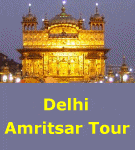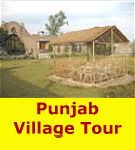|
 Home Home
 About
us
About
us
 Contact
us
Contact
us
 Sikh
links Sikh
links
 Message
Board Message
Board
 Online shopping
Online shopping
 Amritsar Hotels
Amritsar Hotels
 Golden Temple and Amritsar Gurudwaras Tour
Golden Temple and Amritsar Gurudwaras Tour
 Delhi
- Golden Temple Tour
Delhi
- Golden Temple Tour
 Delhi
- Punjab Gurudwaras Tour
Delhi
- Punjab Gurudwaras Tour
 Essence
of Essence
of
Punjab Tour
 India Tours India Tours
 Golden
Temple & Punjab Gurudwaras
Golden
Temple & Punjab Gurudwaras
 Hemkund
Sahib Hemkund
Sahib
and Paonta Sahib
 Pakistan
Gurudwara Pakistan
Gurudwara
 Hemkund
Sahib, Paonta Sahib & Golden Temple Hemkund
Sahib, Paonta Sahib & Golden Temple
 Sachkhand
Sri Hazur Sahib Sachkhand
Sri Hazur Sahib
 Gurudwara
Manikaran Gurudwara
Manikaran
 Damdama Sahib Damdama Sahib
 Gurudwara
Patna Sahib Gurudwara
Patna Sahib
 Panj
Takht Panj
Takht




|
Gurudwara Tours
Delhi Gurudwara Tours
Punjab Gurudwara Tours
A Sikh temple or shrine is called a
Gurudwara. Gurudwara is not just a place of worship, it is a social institution as
well. Delhi has many beautiful and magnificent Gurudwaras that surely give a feel about the prosperity of
Sikhism and Sikh community. Delhi Gurudwaras hold reverence not only for Sikhs, but people of other faiths as well. Also, almost all the Gurudwaras in Delhi has some interesting legend attached to it.
Gurudwara Bangla
Sahib : Gurudwara Bangla Sahib in Delhi was once a superlative and large bungalow of Raja Jai Singh of Amber (now Jaipur) who commanded great respect and honor in the court of Mughal Emperor Aurangzeb. It has been converted in to a holy shrine since the eighth Guru Sri Har Krishan accepted the invitation of the king and stayed here for a few months. During his stay in Delhi, the Guru spent most of his time in serving the humble and the sick and directed Diwan Dargah Mal to use the daily offerings made to him by his devotees for the welfare of the poor. Thus, he won many admirers and there were stories that told about his healing powers spreading throughout the city.
There is a hospital in its basement run by Delhi Sikh Gurudwara Management Committee. It also has 225 x 235 ft tank with 18 ft wide Parikarma and 12 ft wide verandah on its three sides constructed entirely with people's contribution and voluntary labor of the devotees. An Art Gallery is also located in the basement showcasing paintings that depict historical events related to Sikhism.
Gurudwara Nanak Piao : Gurudwara Nanak Piao enshrines the place where the first Sikh Guru Sri Nanak Dev camped during his visit to Delhi in June 1505. It was said that people of Delhi flocked to meet him in large numbers to pay homage to him and made precious offerings but the Guru distributed all the offerings, thus collected, among the poor and needy. It was called 'piao' as Guru himself served water here to the thirsty who came here from far-way places. The well from which he served water is still well maintained and fully protected.
As a legend goes, Emperor Sikander Shah Lodhi heard of a miracle by Guru Nanak that he performed here of reviving a dead elephant. He requested him to revive his royal elephant that had died. But the Guru refused to oblige him and thus, he imprisoned him. It is said that while he was in prison, a great earthquake shook the capital on July 3, 1505. It was said that it was because of the ill behavior of the emperor, that Nanak has cursed the city. The Chisti Sufi saints and the prison officials intervened and at last, the Emperor ordered the release of the Guru Nanak along with many other prisoners, on his request.
Gurudwara Rakab Ganj : On November 11, 1675, Guru Tegh Bahadur's head was cut off in public in Chandani Chowk, on the orders of Aurungzeb. It is said that such a dust storm ensued just after the event that nothing could be seen and everything was in dark. It was then, when Guru's disciple Bhai Jaita, a Rengreta Sikh, saw his chance and took away the head of the great martyr and escaped to Anandpur Sahib in Punjab where it was cremated with proper ceremony. Almost at the same time, Bhai Lakhi Shah Banjara and his son, Bhai Naghaiya, got hold of the Guru's body and placed it in a ox-driven cart under the cotton bales and escaped to their village, Raisina. This place later came to be known as Rakab Ganj as most of the residents were employed in manufacturing straps for the cavalry of Mughal Army. In saving the body of their peer from the hands of the enemy, they cremated the holy body by burning their own house and put his ashes in a gagar (urn) and buried it on the spot. A mosque was later built there.
In 1783, Sardar Bhagel Singh along with 30,000 Sikh warriors claimed this spot as their own sacred place. Muslims contested this claim and it was decided that Sikhs would reconstruct the mosque on their expense in case the urn containing the ashes of the respected Guru was not found buried beneath. However, the urn was found and thus a magnificent Gurudwara, at a cost of 25 lakh rupees and 12 years of time, was built by the Sikhs there to keep up the memory of the great Guru who made supreme sacrifice for the freedom of worship, belief and expression.
Gurudwara Sis Ganj : Gurudwara Sis Ganj is a famous Sikh pilgrimage, which was built on the land where the Sikh Guru Sri Guru Tegh Bahadur, was martyred in 1675 on the orders of the Mughal emperor Aurungzeb. It is said that suddenly after this unfortunate event, the skies were overcast by the clouds and seeing their chances, Guru's disciple Bhai Jaita, a Rengreta Sikh, took away his head and escaped to Anandpur Sahib in Punjab while Bhai Lakhi Shah Banjara and his son, Bhai Naghaiya, took the Guru's body and cremated it in their home in the Raisina village, where the Gurudwara Rakab Ganj stands today.
A century later, in 1783, Baba Baghel Singh claimed the place as the sacred spot of Sikhs and constructed a shrine here. One can still see the trunk of the tree under which the Guru was martyred, which has been well preserved along with the well, where the great Holy Spirit took his daily bath while he was in prison.
Gurudwara Majnu Ka Tila : Gurudwara Majnu-ka-Tila is positioned on a hillock on the right bank of river Yamuna in Delhi. It is said that in the times of Sultan Sikander Shah Lodhi, a Muslim hermit used to live a secluded life here and helped people cross the river in his boat free-of-charge. His wish to see the glimpse of God was so great that he was always lost in his own thoughts. Thus, the people nicknamed him as 'Majnu', the well-renowned Persian lover who became symbolic of intense love and passion. He attained enlightenment with the blessings of Guru Nanak. His hermitage came to be known as Majnu-ka-Tila (the hilllock of Majnu).
This hermitage had the honor of visits of other Gurus and their devout disciples and became a famous pilgrimage place for the Sikhs. The main personalities who graced the place with their divine presence were Shri Guru Hargobind Sahib ji, the sixth Guru, Shri Ram Rai, the son of the seventh Guru Har Rai, General Baghel Singh, who built the first small structure of shrine here. The maintenance of the shrine was done by the income from the Jagir endowed by Maharaja Ranjit Singh who also built a tiny, old marble Gurudwara that can still be seen today. The devotees constructed Gurudwara in its present massive form in 1950.
We can make 1-2 days
of Delhi Gurudwaras Tour. Please write us number of days tour and number
of people travelling to give you a cost of the Tour.
Book Delhi Gurudwara Tour .....
*******************
We can also organize Delhi Gurudwara Tours with combination with Punjab
Gurudwaras, Please check :
- Delhi Punjab Gurudwara Tours.
- Golden Temple and Amritsar Gurudwara Tours
|
Car
Rental
Amritsar & Chandigarh

Book
Online
India Flights






|